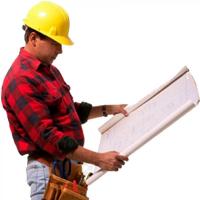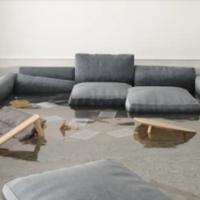6 Things You Should Do After a Flood
by Boris Dzhingarov on Jun 13, 2018
Floods can be overwhelming, whether they’re caused by a plumbing failure, falling water, a sewer backup, a sump pump malfunction or rising groundwater. Many people don’t know what to do except to wait for the floodwaters to recede, and many don’t know what to do after the floodwater has receded.
Here are six things you should do after a flood.
Don’t Take Unnecessary Risks
Turn off power to the building so you can’t get shocked, especially if there is still standing water in the home. Check for signs of structural damage like cracked or warped walls and carry a flashlight so you don’t fall through a new hole in the floor. Avoid downed power lines. Stay away from suspected gas leaks. Contact utility companies if you think there are damaged power, water, or sewer lines.
Stop It from Getting Worse If Possible
As the homeowner, you have a responsibility to try to prevent additional damage from occurring to the property. First and foremost, stopping the flood is possible, if you can turn the water off. Minimizing the damage includes putting boards over broken windows and tarps over holes in the roof when a storm is to blame. Take pictures of what you did to prevent further damage.
Protect Your Health
Even clear flood water could be contaminated by sewage or chemicals. Wear waterproof boots and rubber gloves when you enter the building. Wear protection as you handle items that were damaged by the floodwaters. Throw out all food that came into contact with floodwaters. You may need to boil water until the local authorities say it is safe to drink straight from the tap.
Take Pictures
Before you make any repairs, take pictures to document the damage. The pictures show the extent of the damage and help you to prove your case with insurers. For example, you should take pictures of the wet walls and baseboards to show how high the water levels were inside the home.
Call Your Insurance Company
Notify your insurance company of the flood damage as soon as possible. Ask the insurer if you need to wait for an adjuster to assess the damage before you’re allowed to make repairs. Document the conversations you have with the insurance company, take pictures, and take notes as you make repairs. Once you have permission from the insurer, work to remove water from the home. This may require a wet vac, buckets, or sump pump.
Mitigate Mold Damage
Mold can start growing within a day or two of a flood. Clearing out the water is a good first step. Bringing in fans to help air it out is the next step. Dehumidifiers are ideal for enclosed spaces.
To help mitigate mold, you must remove wet things from your home like carpets and bedding. Then you should start cleaning surfaces with non-ammonia detergent followed by disinfection with a ten percent bleach mixture. Never mix ammonia and bleach together and test the cleaning solutions on a spot before you try to apply it to a large area since chemicals like these can cause discoloration. You should also consider contacting professional cleaners who are specialized in this type of work.
Conclusion
While floods can seem devastating, it is possible to recover from the damage. You may spend weeks cleaning up the mess or dealing with repairs, but you will be able to safely enjoy your home again soon.
Popular Articles
Three Places to Spend Money on the Exterior of Your Home
When you have the exterior of your home remodeled, you are investing, time, energy and convenience into the project and you want to make sure that...
105130 Views
Homemade Headboards-Make an Upholstered or Wooden Headboard
Homemade headboards can add a lot of personality to any bedroom. They can be coordinated with existing furniture and room decor or they can be the...
80249 Views
When to Use a Brush, Roller or Sponge Brush
Brushes are a good choice for painting trim and woodwork. They are also useful for cutting in the edges around the top and bottom edges and corners...
72892 Views
Creating a Cottage Kitchen with Bead Board
Kitchen decor can range from modern and bold to elegant and elaborate by using strategic kitchen pieces. One of the most popular decorating trends...
58663 Views
Gas Fireplace Diagnostics and Troubleshooting
Follow these steps for diagnosing and troubleshooting Gas Fireplaces repairs. For the average DIYer, this may seem intimidating, depending on the...
35685 Views
Latest Articles
Why Professional Boiler Repair is Essential for Home Safety and Comfort
Maintaining a warm and safe home environment is paramount for any homeowner. Your home's boiler system plays a critical role in this, but what...
on Nov 5, 2025
How to Keep Your Home Warm in the Winter
How to Keep Your Home Warm in the WinterAs winter approaches, keeping your home warm becomes a priority for comfort and health. Efficient heating...
on Oct 29, 2025
Why Reliable Furnace Repair is Essential for Winter Comfort
As the cold season approaches, homeowners recognize the critical role that a well-functioning furnace plays in ensuring a warm and cozy living...
on Oct 29, 2025
How Much Does it Cost to Take a Bath?
Plumbers know that a bath may seem like a relaxing luxury, but the real cost extends far beyond your water bill. The average soak uses 35 to 50...
on Apr 8, 2025
10 Concrete Patio Ideas on a Budget
A concrete patio can be a game-changer for your outdoor space. It is durable, versatile, and can be customized to fit your style. But what if you...
on Mar 25, 2025
Featured Articles
What Type of Licensed Contractor Should You Hire?
on Feb 28, 2017
Hire Contractors / Estimates

Looking for a specialty project? There are many types of contractors available for your home improvement needs. Finding the right type of...
Actions
Top Categories
- Garden / Landscaping / Patio — 264
- Kitchen / Bathrooms — 240
- Real Estate / Finance — 203
- Appliance / Repair — 186
- Interior Design / Decor — 184
- HVAC / Air Conditioning — 150
- Cleaning / Maintenance — 144
- Improvements / Remodeling — 131
- Plumbing / Basements — 118
- Floors / Tile / Hardwood — 116
- Safety / Security — 114
- Doors / Garages — 113
Articles Archive
More DIY Articles
Repairing and Buying Appliance Parts: What is Important to Know?
There are different types of appliances available in the market. There are household appliances, business appliances and many others; you can get...
Putting Your Home on the Market?
I know most may not think that including a quality house cleaning is an important factor to aid in the attempt to sell their house. Well, I would...
The Best 7 Upgrades You Can Make to Your Kitchen
Upgrading your kitchen is one of the best decisions you can make for your home. This is because not only is it a room that you spend a lot of time...
Roof Repair- the Ultimate Home Changer
Anyone who owns a home knows the costs involved in repairing items around the home. It may be costly but it surely is worth it. The roof is one...
Working with a Builder you can Trust
Buying a new build can be quite an investment. It is imperative to choose the right builder from the start by finding a reputable, trustworthy...

